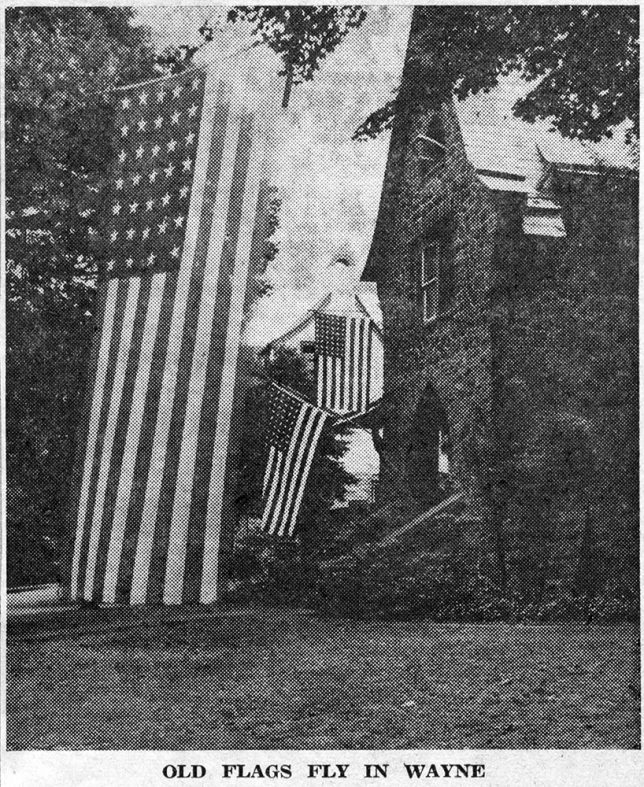 An editorial in “The Suburban” of June 28 once again called the attention of its readers to the fact that “it is only good citizenship to display the flag on our most important national holidays,” and made a plea for a more noteworthy display in our business area on July 4 than had been shown on Memorial Day and Flag Day.
An editorial in “The Suburban” of June 28 once again called the attention of its readers to the fact that “it is only good citizenship to display the flag on our most important national holidays,” and made a plea for a more noteworthy display in our business area on July 4 than had been shown on Memorial Day and Flag Day.
Shown in this week’s column is a picture of the great American flag, hung between two old trees in front of the home of Mr. and Mrs. Theodore B. Brooks, on Windermere avenue. Mr. Brooks, with John Brooke, of North Wayne avenue, had put up the 90-year-old flag. Its 34 stars indicate that it was made between 1861 and 1863, since it was in 1861 that Kansas was admitted into the Union as the 34th state, and West Virginia in 1863.
This Flag, with its dimensions of 25 by 13 feet, has been borrowed more than once by John Brooke from his aunt, Mrs. Nathan Pechin. It had been one of the cherished possessions of her husband, “Nate,” one of Wayne’s most widely-known citizens up to the time of his death a few years ago.
The old flag had come to Mr. Pechin from his uncle, Frank Hoy, who many years ago operated the old King of Prussia Hotel. During most of the years that the family owned the old hostelry, this large flag was displayed from the wide front porch on all national holidays.
As the writer watched the old Flag blowing in the breezes on this Fourth, she felt a sense of pleasure that they were gentle ones, for the stars and stripes are frail with age. There are some small holes here and there in the still bright bunting, and it is so transparent that one can see the leaves of the tree beyond it.
The excellent photograph shown above was taken by Bruce Redfield, formerly of Wayne. Of the other two flags, the one farther away from the camera is another interesting one, since it displays but 45 stars. That dates it as between July 4, 1896, and November 4, 1908, the date when Utah and Oklahoma were admitted as the 45th and 46th states. The third flag is a modern one.
(The second installment of a brief review of “The Old Main Line” will be presented in next week’s issue.)
